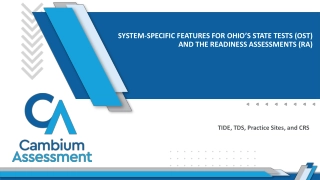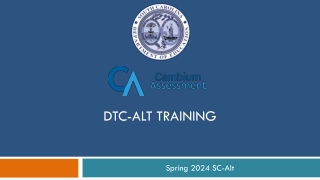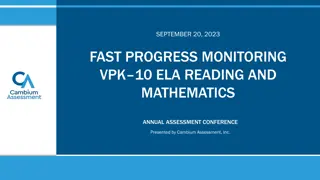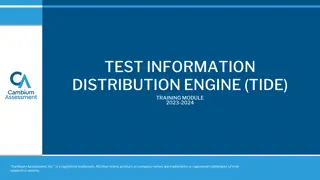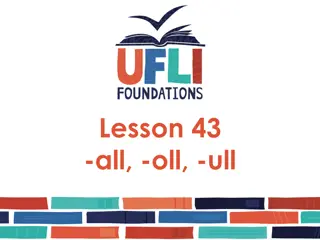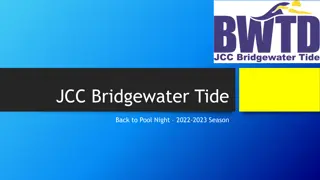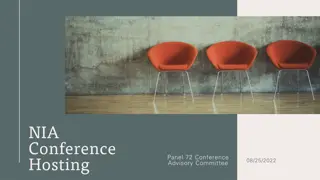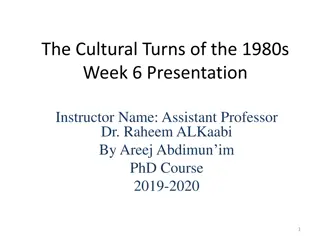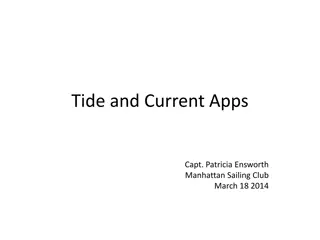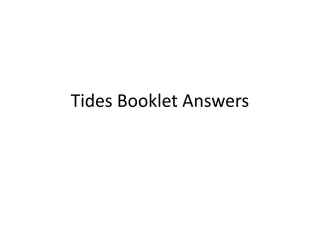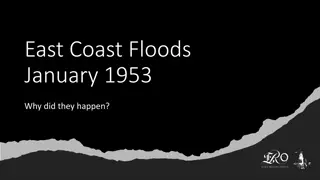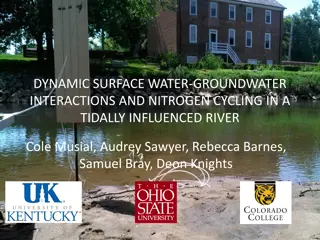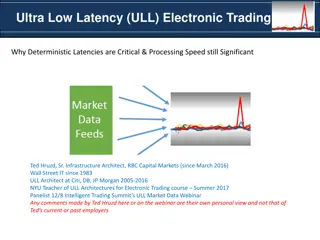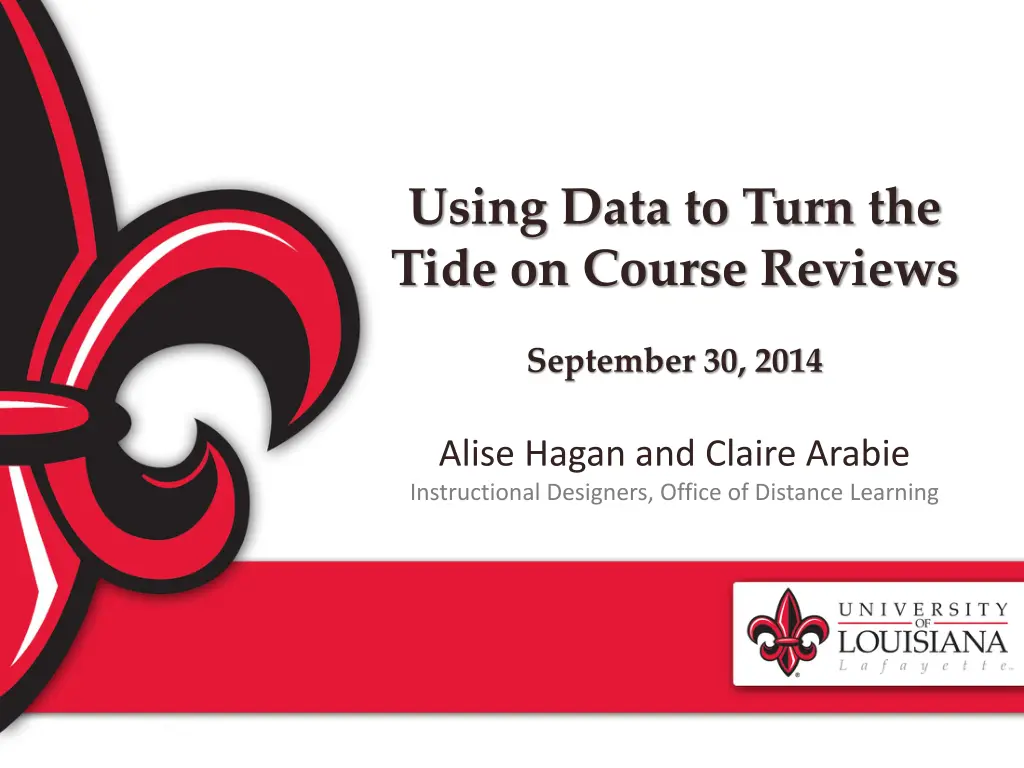
Leveraging Data for Course Reviews Transformation
Discover how the Office of Distance Learning at UL Lafayette utilizes data to enhance the peer-review course certification process, identify improvement areas, and support faculty in overcoming challenges related to quality standards.
Download Presentation

Please find below an Image/Link to download the presentation.
The content on the website is provided AS IS for your information and personal use only. It may not be sold, licensed, or shared on other websites without obtaining consent from the author. If you encounter any issues during the download, it is possible that the publisher has removed the file from their server.
You are allowed to download the files provided on this website for personal or commercial use, subject to the condition that they are used lawfully. All files are the property of their respective owners.
The content on the website is provided AS IS for your information and personal use only. It may not be sold, licensed, or shared on other websites without obtaining consent from the author.
E N D
Presentation Transcript
Using Data to Turn the Tide on Course Reviews September 30, 2014 Alise Hagan and Claire Arabie Instructional Designers, Office of Distance Learning
Office of Distance Learning Turning the Tide on Course Reviews "Just sit right back and you ll hear our tale, a tale of course reviews That started with the rubric and overcoming the not met blues. When the feedback started getting rough, instructors were growing weary So the design team found the standards causing the most misery."
Office of Distance Learning Objectives Learning Objective 1: Explain the internal peer- review course-certification process used. Learning Objective 2: Identify QM standards continuously marked not met among internal review teams. Learning Objective 3: Discuss methods for remedying the not met blues for both review teams and faculty members.
Peer-Review Course Certification Process at UL Lafayette
Office of Distance Learning Peer-Review Process: By the Numbers Over 70 courses have been through the subscriber-managed peer-review process average 12 reviews / cycle, or 24 reviews / year Over 85 faculty have served as either a department or university reviewer on at least one review 39 faculty in 17 departments have at least one certified course
Office of Distance Learning Peer-Review Process: How are courses selected? Course is part of a fully online or fully hybrid program (Program coordinators identify the rotation ) 1 Course supports a fully online or fully hybrid program (such as Gen Ed courses) 2 Course designed through Course Design Practicum 3 At faculty member or department head request 4
Office of Distance Learning Peer-Review Process: Who s on the review team? The review team includes: Instructor (course designer) University Reviewers (two) Department Reviewer (one minimum) Department Head (or designee) Review Chair (ODL staff)
Office of Distance Learning Peer-Review Process: Reviewer Roles Department Reviewer University Reviewer QM Standards 21 Essential (3- point) standards 21 (all) 21 (all) 12 Very Important (2- point) standards 6 6 8 Important (1- point) standards 4 4 TOTAL 31 31
Office of Distance Learning Peer-Review Process: What s the path to certification? Complete Course Worksheet (Instructor) Approve CW and Clone Course (ODL) Identify Courses (ODL) Identify Review Team (ODL) {1 week} Review Changes (Department Head) Make & Record Changes (Instructor) Discuss Review Summary Report (ODL, Instructor) Conduct Reviews (Reviewers) {1 week} {4 weeks} {4 weeks} Final Changes and Decisions (Instructor, ODL) Course Earns ULearn Certification
The Not Met Blues: Standards Most Frequently Marked as Not Met
Office of Distance Learning Not Met Blues: Curiosity led us to the Data Which standard(s) were marked not met by the review team? Which standards were most frequently marked not met ? What could we learn from the most frequently not met standards?
Office of Distance Learning Not Met Blues: A Closer Look (FA11-FA13) Frequency of Not Met by review team # of standards (out of 41) The standards (Essential) 50%+ (at least 33/66) 3 1.7, 7.4, 8.2 40-49% (at least 27/66) 4 3.3, 7.1, 7.3, 8.4 30-39% (at least 20/66) 1.3, 1.5, 1.6, 1.8, 5.3, 5.4, 8.1 7 20-29% (at least 14/66) 1.1, 2.2, 3.5, 4.6, 6.2, 6.3, 6.5 7 TOTAL 21
Remedies for the Not Met Blues
Office of Distance Learning Remedies for the Blues: Actions Taken for Reviewers Reviewer Refresher workshop (SP14) Most missed (50%+) Essentials most missed (20%+) General standards
Office of Distance Learning Closer Look at Standard 8.2 (Not Met 43/66; 65%) Standard: The course contains equivalent alternatives to auditory and visual content. For this standard to be met at UL Lafayette: Link to transcripts provided by textbook publisher (for publisher content) Transcripts provided by instructor for instructor-made audio Descriptions / captioning for video or images A statement explaining how to seek accommodations or content in alternative formats. Tip: Get in the habit of having a written script prior to recording a lecture. Then, once the lecture is posted, you can post the script as well.
Office of Distance Learning Closer Look at Standard 7.4 (Not Met 41/66; 62%) Standard: Course instructions articulate or link to an explanation of how the institution s student support services can help students succeed and how students can access the services. For this standard to be met at UL Lafayette: A description of the Office of Student Affairs and how to access it (provide link to the website: http://studentaffairs.louisiana.edu/) A list of the types of services available and websites: Advising Registration Financial Aid Student / Campus Life Counseling / Testing Career Services Student Organizations Tip: Create a Learner Support block in the LMS that includes these links for your institution.
Office of Distance Learning Closer Look at Standard 1.7 (Not Met 34/66; 51.5%) Standard: The self-introduction by the instructor is appropriate and is available online. For this standard to be met at UL Lafayette, look for both: The essentials: the instructor s name, title, field of expertise, email address, phone number and times when the instructor is typically online or may be reached by phone. Something extra: A welcome note (with picture) or recorded message A bio or history of teaching A link to a personal website / blog for additional personal information Tip: Instructors should consider having the self-introduction reside in a more permanent place in the course.
Office of Distance Learning Remedies for the Blues: Actions Taken for Reviewers Reviewer Refresher workshop (SP14) Most missed (50%+) Essentials most missed (20%+) General standards
Office of Distance Learning Essential Standards Not Met Consider this Are there course instructions that direct students what to do first? Are the course overview and schedule of activities easy to locate? 1.1 (26%) 2.2 (24%) Does the instructor include module / unit objectives in the syllabus, checklist, or topic / module block? Has the instructor stated the criteria for evaluation of papers and assignments, such as rubrics or a list of criteria with associated point values? 3.3 (42%) Is there a clear statement of instructor responsibilities which states the timeframe for responding to student emails / discussion posts, and when grades will be posted? 5.3 (33%)
Office of Distance Learning Essential Standards Not Met Consider this Does the instructor use technology to increase students comfort with course material and facilitate learner engagement? 6.2 (24%) 6.3 (24%) Does the learner move from one place to another in the course in a logical manner, and with ease? 7.1 (42%) Does the instructor explain the links and resources provided in the Learner Support block? Does the instructor explain services provided by the Office of Disability Services and how to access these services? 8.1 (33%)
Office of Distance Learning Remedies for the Blues: Actions Taken for Reviewers Reviewer Refresher workshop (SP14) Most missed (50%+) Essentials most missed (20%+) General standards
Office of Distance Learning Closer Look at General Standard 1 (6 of 8 were not met at least 20% of the time) GS1: The course introduction sets the tone for the course, lets students know what to expect, and provides guidance to ensure they get off to a good start. As reviewers, look for: How are students welcomed to the course? Is there a welcome video or note? Do students know where to begin, and specifically what to do to begin the course? Is the purpose and structure of the course explained? Look for: course schedule, delivery modality, modes of communication, learning activities, and how learning will be assessed. Is Day 1 information available easily? Are the course calendar and syllabus easy to access and understand? Are the course policies clearly stated? Does the instructor provide a self-introduction? Are students expected to introduce themselves? (note: check instructor worksheet) Are the pre-requisite skills / knowledge clearly stated? (note: this is different from course pre-reqs)
Office of Distance Learning Closer Look at General Standard 7 (3 of 4 were not met at least 20% of the time) GS7: In the learner support standard, four different kinds of support services are addressed: technical, accessibility, academic services, and student services. As reviewers, look for: A statement in the course (typically the syllabus) that directs students to each of the links within the Learner Support block. A brief explanation for each link should be provided.
Office of Distance Learning Closer Look at General Standard 8 (3 of 4 were not met at least 20% of the time) GS8: The accessibility standard incorporates the principles of Universal Design for Learning and is consistent with Web Content Accessibility Guidelines. As reviewers, look for: Statement about the Office of Disability Services and how to access these services. A link (through Learner Support) for Accessibility policies. Equivalents to auditory and visual content. Fonts, colors, graphics that promote navigation and readability. (For example, blinking icons may induce seizures, or some colors are not visible to students with certain color- blindness.) Use the description fields to include additional information about an assignment, page, link, image, etc. (Many faculty put x or . so that is what is read by the screen reader.)
Office of Distance Learning Remedies for the Blues: Actions Taken for DL Faculty Mini-Reviews Accessibility Workshop Learner Support block in Moodle
Office of Distance Learning Remedies for the Blues: Early Results (SU14) 29% reduction in standards not met 40%+ 86% reduction overall in not met standards (of standards addressed) # of standards not met FA11-FA13 (out of 41) # of standards not met FA11-SU14 (out of 41) Frequency of Not Met by review team 50%+ 3 2 40-49% 4 3 30-39% 7 7 20-29% 7 9 TOTAL 21 21
Office of Distance Learning Ahoy! In this workshop, we: Explained the internal peer-review course- certification process used. Identified QM standards continuously marked not met among internal review teams. Discussed methods for remedying the not met blues for both review teams and faculty members.
Thank You! Alise Hagan: alise@louisiana.edu Claire Arabie: claire@louisiana.edu http://distancelearning.louisiana.edu/

